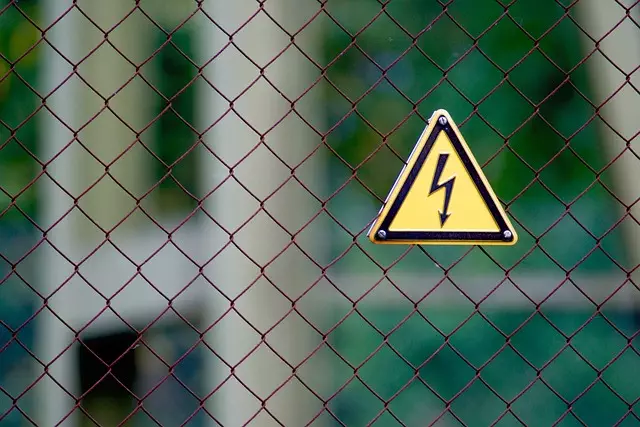Kratom, derived from the Mitragyna speciosa plant and containing alkaloids that interact with opioid receptors, has become a contentious topic in Louisiana, particularly in light of its potential to relieve opioid withdrawal symptoms such as anxiety, muscle pain, insomnia, and cravings. Despite this, its use is surrounded by debate due to concerns over abuse, dependence, inconsistent product quality, and dosing. In Louisiana, where the opioid crisis has had a significant impact, kratom's status as a Schedule I controlled substance reflects the ongoing regulatory and medical community discussions on its merits and risks. Healthcare providers are actively engaged with policymakers and patients to navigate this issue, advocating for careful consideration of kratom within opioid withdrawal management strategies. The legal standing of kratom in Louisiana is complex and varies by local jurisdiction, with some parishes treating it as a Schedule I substance while others allow its sale. This variability impacts consumer access and underscores the need for individuals to be aware of their local laws. The evolving federal regulations, including the DEA's fluctuating stance on kratom, require continuous vigilance from consumers. In Louisiana specifically, any use of kratom must be approached with caution and under the guidance of a healthcare professional due to its potential for dependency and adverse reactions, and it should not replace comprehensive treatment strategies overseen by medical experts.
Kratom, a tropical evergreen tree native to Southeast Asia, has emerged as a subject of interest within the context of opioid withdrawal management, particularly in Louisiana. As communities across the state grapple with the opioid epidemic, individuals seek effective and accessible solutions for detoxification. This article delves into the multifaceted role of kratom in mitigating withdrawal symptoms, examining its legal status, availability, and safety considerations within Louisiana’s diverse regions. Through a comprehensive exploration of kratom’s potential benefits and potential risks, readers will gain insights into how this plant-based substance might serve as an alternative or adjunct to traditional treatments for opioid detoxification in Louisiana.
- Understanding Kratom's Role in Mitigating Opioid Withdrawal Symptoms in Louisiana
- The Legal Status and Accessibility of Kratom in Louisiana Communities
- A Closer Look at Kratom Dosage and Safety Considerations for Opioid Detoxification in Louisiana
Understanding Kratom's Role in Mitigating Opioid Withdrawal Symptoms in Louisiana

Kratom, a plant from Southeast Asia with leaves that contain compounds that can interact with opioid receptors in the brain, has garnered attention for its potential role in mitigating opioid withdrawal symptoms. In Louisiana, where the opioid crisis has had profound impacts on communities, understanding the implications of kratom is crucial for those seeking alternative methods to manage withdrawal. Preliminary studies and anecdotal evidence suggest that kratom may alleviate some of the uncomfortable symptoms associated with opioid cessation, such as anxiety, muscle aches, insomnia, and cravings. However, the use of kratom is not without controversy; it remains a subject of debate within medical and regulatory circles due to its potential for abuse and dependence, as well as variability in product quality and dosage. In Louisiana, where opioid addiction has been particularly acute, the exploration of kratom as a tool for withdrawal management is an area of active discussion among healthcare providers, policymakers, and patients. The state’s legislative framework, which classifies kratom as a Schedule I controlled substance, reflects the ongoing tension between its perceived benefits and risks. As such, individuals in Louisiana considering kratom for opioid withdrawal should approach it with caution, seeking guidance from healthcare professionals well-versed in the complexities of kratom’s interactions with opioid use disorder treatment.
The Legal Status and Accessibility of Kratom in Louisiana Communities

In Louisiana, the regulatory landscape concerning Kratom has been subject to debate and change. As of my knowledge cutoff in early 2023, Kratom’s legal status in Louisiana communities varies depending on local jurisdictions. While some parishes have enacted ordinances that classify Kratom as a Schedule I controlled substance, aligning it with the federal government’s stance, other areas within the state have not imposed such restrictions. This patchwork of regulations can affect the accessibility of Kratom products for individuals seeking its use, particularly for those looking to mitigate opioid withdrawal symptoms. Consumers in Louisiana must be aware of their local laws before pursuing Kratom as an option, as compliance with these laws is essential. It’s advisable for interested parties to consult the most current local legislation or legal advice to understand the implications and accessibility of Kratom within their specific community in Louisiana.
Navigating the legality of Kratom in Louisiana can be complex due to evolving state and federal regulations. At a state level, there have been efforts to regulate and control the substance, with some advocating for its classification as a controlled substance based on its Mitragynine content, which is similar to opioids. However, these regulatory efforts are ongoing, and the final legal status of Kratom in Louisiana remains under review. On the federal level, the DEA’s stance has fluctuated over recent years, with Kratom being placed into various schedules and then removed from any controlled substance list. This ever-changing legislative environment underscores the importance for consumers to stay informed about the latest developments affecting Kratom’s legal status in their communities within Louisiana.
A Closer Look at Kratom Dosage and Safety Considerations for Opioid Detoxification in Louisiana

When considering the use of kratom for opioid withdrawal management in Louisiana, it is imperative to approach its application with caution and informed guidance. Kratom, derived from the leaves of Mitragyna speciosa, has been explored as a potential aid in mitigating withdrawal symptoms associated with opioid cessation. The FDA’s stance on kratom oscillates between warning against its use and acknowledging some individuals’ reliance on it for pain management and opioid withdrawal relief. In Louisiana, where the opioid crisis has significant implications for public health, understanding the nuances of kratom dosage is critical.
The optimal kratom dosage for withdrawal symptoms alleviation is a subject of ongoing research and debate. Users in Louisiana should be aware that self-medication with kratom can be hazardous, as the substance’s effects may vary greatly depending on various factors including individual physiology, tolerance, and the specific strains consumed. Safety considerations are paramount; dosages must be carefully determined and monitored by a healthcare professional experienced in the use of kratom for opioid detoxification. Additionally, individuals should be cautious of the potential for dependency or adverse reactions, which may necessitate medical intervention. It is essential to consider that while kratom may offer some relief, it is not a one-size-fits-all solution and should only be used as part of a comprehensive treatment plan under professional supervision in Louisiana.
In conclusion, the potential of kratom as a mitigating agent for opioid withdrawal symptoms has sparked considerable interest and debate within Louisiana communities. As explored in this article, understanding its role and navigating the legal landscape are critical steps toward informed use and accessibility. While kratom in Louisiana presents both opportunities and challenges, it is imperative to approach its dosage and safety with caution and under professional guidance. The ongoing research and regulatory discussions aim to clarify its efficacy and ensure that those seeking relief from opioid withdrawal can do so safely and legally. It remains a subject of significant attention and potential for those affected by opioid dependency, reflecting the evolving landscape of treatment options within the state.






